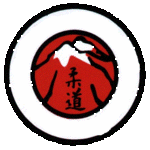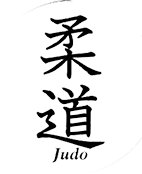Tori - Maestro Sergio Martin, Uke - Professor Martin Nunes
3 posters
Kuzushi-no-kata - Martin / Nunes

finarashi- Posts : 507
Join date : 2013-01-11
Location : Finland
- Post n°2
 Re: Kuzushi-no-kata - Martin / Nunes
Re: Kuzushi-no-kata - Martin / Nunes
Crisp throwing, that is a plus. If you look at many videos available the throws are not as good as here.
I have two questions;
- why use the phony gripping? why not from standard grip.
- why do throws from static kuzushi when we have multiple kata to teach us the use of dynamic kuzushi
Or as corollay to the last question? If this "kata" was meant for white and yellow belts? Then why sutemi waza?
BUt again wish my throws were as nice looking!
I have two questions;
- why use the phony gripping? why not from standard grip.
- why do throws from static kuzushi when we have multiple kata to teach us the use of dynamic kuzushi
Or as corollay to the last question? If this "kata" was meant for white and yellow belts? Then why sutemi waza?
BUt again wish my throws were as nice looking!

Cichorei Kano- Posts : 1948
Join date : 2013-01-16
Age : 864
Location : the Holy See
- Post n°3
 Re: Kuzushi-no-kata - Martin / Nunes
Re: Kuzushi-no-kata - Martin / Nunes
I think that these are people from the Argentinian Judo Federation, the same ones that also crafted an "ukemi-nokata":
. I also think that what they mean is "Instructor" Martin Nunes.
I think that these are didactic and methodological exercises. There are many precedents of these. Wolfgang Hofmann's Hôhô-no-kata is another one. Hirano Tokio also created a couple. Their merit is that they help showing to a student the idea behind something, or how something is tied together. The problem is that we do not have any data on the merit of these exercises, that is to say, whether they realize what they aim for and whether they thus succeed in facilitating the learning experience. The traditional Kôdôkan approach to many of these skills is only mediocre at best. Kanô devised happô-no-kuzushi, but from their to successfully applying kuzushi and throws in randori is still quite a stretch. This is also suggested by so many jûdôka having very poor technical skills. I had some of the most technically able teachers one could possibly imagine but if one thinks that they produced superbly technically skilled jûdôka by the batch, you are very wrong. So there is a huge problem in transferring jûdô skills.
. I also think that what they mean is "Instructor" Martin Nunes.
I think that these are didactic and methodological exercises. There are many precedents of these. Wolfgang Hofmann's Hôhô-no-kata is another one. Hirano Tokio also created a couple. Their merit is that they help showing to a student the idea behind something, or how something is tied together. The problem is that we do not have any data on the merit of these exercises, that is to say, whether they realize what they aim for and whether they thus succeed in facilitating the learning experience. The traditional Kôdôkan approach to many of these skills is only mediocre at best. Kanô devised happô-no-kuzushi, but from their to successfully applying kuzushi and throws in randori is still quite a stretch. This is also suggested by so many jûdôka having very poor technical skills. I had some of the most technically able teachers one could possibly imagine but if one thinks that they produced superbly technically skilled jûdôka by the batch, you are very wrong. So there is a huge problem in transferring jûdô skills.

finarashi- Posts : 507
Join date : 2013-01-11
Location : Finland
- Post n°4
 Re: Kuzushi-no-kata - Martin / Nunes
Re: Kuzushi-no-kata - Martin / Nunes
Something I have always wondered: Why does Kodokan Judo limit itself to the ukemi shown. There are several more ukemi that could be practiced, but aren't. e.g. rolling ukemi to both sides and back. One uses them in e.g. Aikido. We saw rolling ukemi to side as a result from "kuzushi" to the side in the first video.Cichorei Kano wrote:I think that these are people from the Argentinian Judo Federation, the same ones that also crafted an "ukemi-nokata":
. I also think that what they mean is "Instructor" Martin Nunes.
I think that these are didactic and methodological exercises. There are many precedents of these. Wolfgang Hofmann's Hôhô-no-kata is another one. Hirano Tokio also created a couple. Their merit is that they help showing to a student the idea behind something, or how something is tied together. The problem is that we do not have any data on the merit of these exercises, that is to say, whether they realize what they aim for and whether they thus succeed in facilitating the learning experience. The traditional Kôdôkan approach to many of these skills is only mediocre at best. Kanô devised happô-no-kuzushi, but from their to successfully applying kuzushi and throws in randori is still quite a stretch. This is also suggested by so many jûdôka having very poor technical skills. I had some of the most technically able teachers one could possibly imagine but if one thinks that they produced superbly technically skilled jûdôka by the batch, you are very wrong. So there is a huge problem in transferring jûdô skills.

Cichorei Kano- Posts : 1948
Join date : 2013-01-16
Age : 864
Location : the Holy See
- Post n°5
 Re: Kuzushi-no-kata - Martin / Nunes
Re: Kuzushi-no-kata - Martin / Nunes
finarashi wrote:
Something I have always wondered: Why does Kodokan Judo limit itself to the ukemi shown. There are several more ukemi that could be practiced, but aren't. e.g. rolling ukemi to both sides and back. One uses them in e.g. Aikido. We saw rolling ukemi to side as a result from "kuzushi" to the side in the first video.
Probably because if one considers all original jûdô exercises (so excluding koshiki-no-kata and itsutsu-no-kata) all ukemi traditionally taught cover all ukemi skills required, and that can be performed and practiced safely ...
» Creating a new Kata Part XI: The "Kata of Hip Techniques" (Koshi waza no Kata)
» Creating a new Kata Part XII: The "Kata of Hand Techniques" (Te waza no Kata)
» Creating a new Kata Part II: "Kata of Entry Methods for Throwing Techniques" (Nage waza hairi no Kata)
» Creating a new Kata Part X: The "Ashi waza no Kata" (Kata of Leg/Foot Techniques)
» Creating a new Kata Part IV: "Kata of Sacrifice Techniques" (Sutemi waza no Kata)
» Creating a new Kata Part XII: The "Kata of Hand Techniques" (Te waza no Kata)
» Creating a new Kata Part II: "Kata of Entry Methods for Throwing Techniques" (Nage waza hairi no Kata)
» Creating a new Kata Part X: The "Ashi waza no Kata" (Kata of Leg/Foot Techniques)
» Creating a new Kata Part IV: "Kata of Sacrifice Techniques" (Sutemi waza no Kata)

